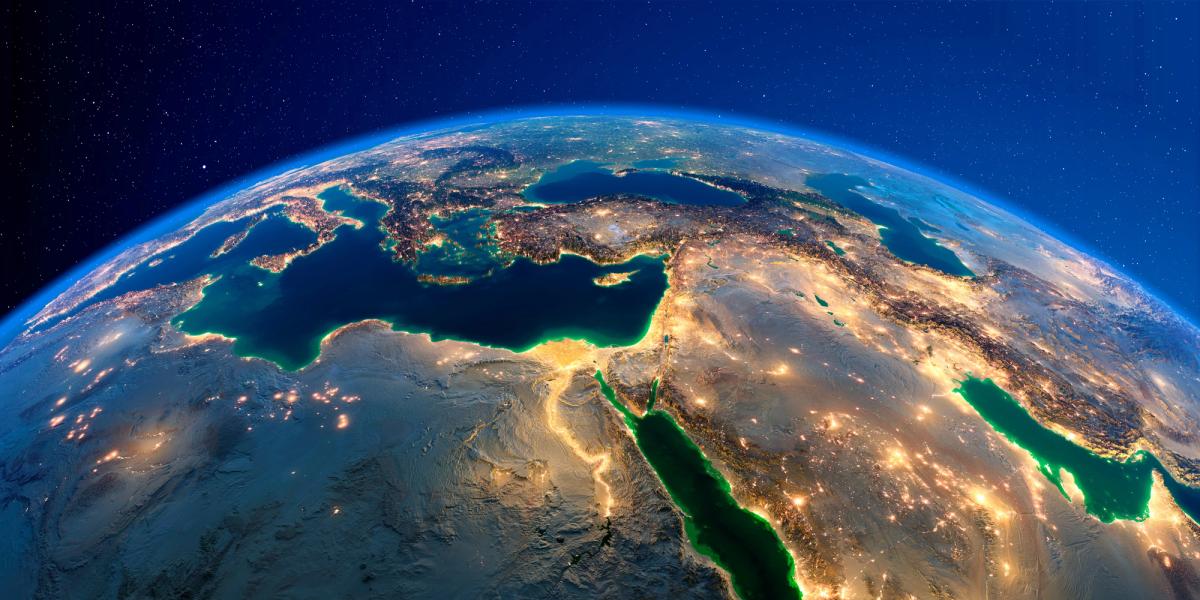
As climate changes continue to affect lives here and abroad, meaningful climate action is more important than ever. This year we have seen floods in Pakistan, European heatwaves, and an extremely wet winter in Aotearoa New Zealand. More frequently, we are seeing the affects climate change is having on communities and global economies. The IPCC Sixth Assessment Report on impacts, adaptation, and vulnerability outlines there are increasing climate risks that are projected to exacerbate existing vulnerabilities and social inequalities and inequities.
We’re a year on from COP26. Seeing how much progress has been made on both climate ambition and climate commitments can determine the success of this years’ event.
What is COP27?
The climate crisis will be discussed by world leaders, delegates, climate experts, and members of civil society at the Conference of the Parties (COP)27, November 6-18 in Sharm El Sheikh, Egypt.
The annual conference brings together signatories of the United Nations Framework Convention on Climate Change (UNFCCC), an international climate treaty that was signed in Rio de Janeiro in 1992.
What might we expect at COP27?
Previous COP events produced significant milestones such as the Paris Agreement in 2015, or the Glasgow Pact in 2021. However, we cannot expect such landmark outcomes this time around. While there is a series of themed days, such as finance, decarbonisation, water, and energy days, the focus is now on what progress is being made, and the implementation of climate commitments. Topics of interest for COP27 are likely to include:
- Phasing out fossil fuel subsidies
- Energy and food: security, affordability, and lower emissions (the trilemma)
- Loss and damage from climate change occurring in developing nations
- Adaptation and mitigation
- Climate finance
- 2030 methane targets
- Keeping 1.5°C alive
Why do we need to limit temperature rise to 1.5 degrees?
The concept of “keeping 1.5 alive” comes from the Paris Agreement, following the landmark COP21 in 2015. Every country agreed to:
Holding the increase in the global average temperature to well below 2°C above pre-industrial levels and to pursue efforts to limit the temperature increase to 1.5°C above pre-industrial levels
There is a notable increase in dramatic and severe impacts on people and nature if we reach 2°C of global warming, compared to 1.5°C above pre-industrial levels. This includes:
- a third of the world’s population would be regularly exposed to severe heat, leading to health problems and more heat-related deaths
- almost all coral reefs would be destroyed, and the Arctic sea ice would melt entirely at least one summer each decade. This would have devastating impacts on the wildlife and communities they support
- the possibility of irreversible ice sheet loss in Greenland and the Antarctic, leading to several metres of sea level rise.
At 1.5°C, the impacts would still be serious, but less severe. There would be fewer food and water shortages, and fewer species at risk of extinction. Half a degree of warming may not sound like much, particularly if you think about the temperature of the room you are in right now. But the difference to the planetary systems is much more than just a number.
At COP27, countries may be asked to update their Nationally Determined Contributions to be in line with 1.5°C warming.
Toitū at COP27
Our very own Belinda Mathers, General Manager of Technical, will be on the ground at COP27 and presenting at the following events:
- The role of ISO standards in voluntary and mandatory programs of carbon accounting, November 10, 6-8pm Egypt time
- CFIA: the Alliance for more consistent carbon footprints, November 12, 1030pm -1230 am Egypt time
These events help us engage and align with best practice in our carbon certification programmes. Furthermore, it provides a chance to raise the international profile of Toitū Envirocare.
The international context and policy targets can further guide NZ businesses to reduce their emissions, while reflecting the work and investments made so far. With COP focused on implementation, we aim to share stories that our members and community can learn from and apply back in Aotearoa. We will be providing updates from COP27 where possible as we understand the latest commitments, progress, and policy changes.
How might outcomes impact New Zealand businesses?
It is important that businesses are in line with the trends and climate commitments seen at COP27.
We risk losing a competitive advantage if our high-quality products are also high in emissions and not factoring in Scope 1, 2, and 3 emissions. Although challenging, significant opportunity exists. New Zealand businesses have the chance to showcase world-leading and innovative approaches.
Following the plan to put a price on agricultural emissions, New Zealand will be expecting other nations to move away from agricultural subsidies and towards pricing methane and nitrous oxide emissions, too. NZ Climate Ambassador Kay Harrison, who is leading New Zealand’s delegation, says “we will be encouraging them not to subsidise their agriculture emissions”. This poses questions about what climate resilient agricultural systems may look like as the world population and demand for food increases.
Summary
While COP27 will provide renewed and advanced commitments to tackle the climate crisis, we cannot expect momentous outcomes from this convention. Measuring the success of COP27 is a subjective game. A desired outcome would involve a call for countries to report on their progress following the Glasgow Pact that shows real change is happening. How are they phasing down fossil fuels, particularly coal? Are prosperous nations aiding those who need it most to tackle climate change? Shifting the dial on these and many other commitments can also help move warming projections back below 2°C, and even keep 1.5°C alive.